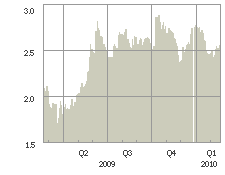One reason why Robert Rapier is such a powerful writer (and a wonderful one to read) is that he rarely strays into dogma and talking points (and the times he does so, he usually signals it); his articles are quite analytical and verifiable. In his latest post, he rips into Range Fuels and Cello Energy, and also states that venture capitalist Vinod Khosla had no idea what he was investing in.
In summary, I will point out that the two primary sources of cellulosic production being counted on by the EPA for 2010 were Range Fuels and Cello Energy. Both are Vinod Khosla ventures, and neither has come remotely close to delivering despite lots of funding and taxpayer assistance. I don’t think these are isolated cases. I think they are a symptom of things to come. We have gotten a lot of overpromises, because face it, that has worked to secure funding. But what this leads to are completely unrealistic expectations regarding our energy policy, and numerous bad decisions regarding where tax dollars should be spent.
Finally, I want to make one thing crystal clear. I am not criticizing failure here. That is normal and expected. Failure is a part of what it takes to learn and move forward. What I am criticizing is the nature of the failure; that it was primarily because inexperienced people were making claims they shouldn’t have made, and taxpayers are going to get stuck with the bills. Personally, I have a problem with my tax dollars being squandered away by smooth-talking salesmen.
The underlying science (mainly the first law of thermodynamics – not even process engineering is required to understand the issue) will show that it is very difficult, if not impossible, to get a net energy return on the production of alcohol-based (methanol/ethanol) fuel. Essentially, such fuels require energy inputs far greater than their desired output, so why not just use the input directly in whatever application you require the energy for?
There are some applications where energy conversion will be desirable anyway, despite a net energy loss – for example, the conversion of a diffuse source of energy (corn) into a concentrated source (ethanol), but if you are using a source of energy with even higher energy concentration and equal portability (natural gas), what is the point?
The government and a lot of people in the US Environmental Protection Agency (EPA) got sold a bill of goods, and they took the bait, hook, line and sinker.
Here in Canada, provincial governments are enacting legislation to blend in ethanol into fuels, which is a grave mistake. Also, the emphasis of hydrogen as a fuel to eventually replace gasoline is misguided; my thoughts are that hydrogen’s potential lies with energy storage rather than replacing conventional fuels.
Politicians get sold a bunch of fancy marketing and great promises in the hope that taxpayers’ dollars will get allocated toward whatever special interest of the day is being pitched at them (in this case, “less reliance on oil” is the message, although in the case of ethanol-blended gasoline “clean fuels to prevent global warming” is the message). The politicians and staff do not have the scientific capability of properly analyzing the proposals, and they get slick marketing pitches to sell them. Next thing you know, millions of dollars of taxpayers money are wasted with inefficient proposals and the end-consumer will pay for it when governments inevitably have to raise taxes to recover their losses on the project.
In the end, physics trumps marketing, but not after a lot of money is wasted once people scale up operations are realize they have no chance of delivering what they promised.
